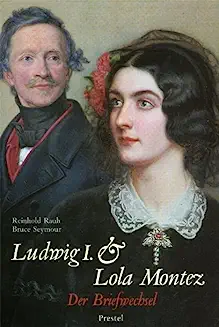This lovely summer palace, the Nymphenburg, built to celebrate the birth of a baby, is easily reached from the city centre. This post explains what to see when you visit Schloss Nymphenburg, which means Nymphs’ Palace in English, and fills in some of the background history: stories of aristocratic births, of pet projects and royal scandals. As we say on the podcast, the tales attached to this building are a reminder that really, there’s ‘nowt so queer as folk.’
A palace built in celebration

In 1664, the Elector of Bavaria, Ferdinand and his wife Adelaide of Savoy were so delighted at the birth of their baby son, Maximilian Emanuel, that they built this palace in celebration. An architect was commissioned, beautiful baroque interiors and stately gardens were designed and this is the result. It’s said that, like so many of their contemporaries, Ferdinand and Adelaide wanted a palace to rival Versailles. In fact, the palace’s façade is said to be wider than that of Versailles, but overall it’s not quite so OTT extravagant. It is, nonetheless, a delight.
inside the palace



Inside, you will first be impressed by the Great Hall, described by a Lonely Planet author as a ‘riot of rococo’, a huge room extending down the length of the building with extensive views to the front and back of the palace. Among the grandest rooms are the Festsaal, which is a former ballroom, and the Queen’s bedroom, complete with the bed where Ludwig II was born, setting the bells ringing out all over Munich on August 25th, 1845. The ‘Schönheitsgalerie’, or ‘Gallery of Beauties’ in English, was established by Ludwig I as a gallery of portraits of his mistresses. There are nearly 40 paintings including one of Lola Montez, the woman who scandalised Munich and led to Ludwig’s abdication.
the Nymphenburg palace grounds



The gardens (Schlosspark) are immediately beautiful – think regular lawns and pathways, fountains and statues. Further into the parkland are dotted little buildings which the electors and kings of Bavaria had built on a whim, various follies and hunting lodges, often reflecting their idiosyncrasies. For a hunting lodge, the Amalienburg seems over-decorated, with its hall of mirrors, abundance of gilt and crystal and themed decorations referencing Diana, goddess of hunting and Bacchus, god of wine. In fact, despite its original purpose, this retreat from the main house was mainly used for banquets, balls and concerts.
Then there’s the Pagoda House, an 18th century teahouse built in the then very fashionable Chinese style, and a sauna and bathhouse, the ‘Badenburg’. This was used, explains the guide book, for the prevailing ‘court bathing culture’. Curious. Equally intriguing is the Magdalenenklause, a hermitage built by Maximilian Emanuel, the aforementioned baby who grew up to follow in his father’s footsteps as Elector of Bavaria. Here it is said that, after a long life of revelry and debauchery, he could retreat to pray and meditate. Also in the grounds is a Coach Museum, where exhibits include the costly coach designed for Ludwig II’s wedding, never used after he called off the ceremony at the last minute.



Of all the Wittelsbachs associated with the Nymphenburg Palace, one who certainly captures the imagination is Ludwig I, not least because his ‘Gallery of Beauties’ is here. Ludwig gained a lot of respect during the first part of his reign, being a great patron of the Arts, as described in the previous episode. But it is perhaps for the scandalous relationship he conducted in later life with his mistress Lola Montez that he is most talked about today. She is one of nearly forty ‘beauties’ on display here.
The dancer, who had abandoned her real name, Eliza Gilbert, in favour of the more exotic Lola Montez, arrived in Munich with quite a reputation. She had already eloped at the age of 19, then abandoned her husband and worked at many of Europe’s theatres, pausing here and there for liaisons with such well-known luminaries as Franz Liszt and Alexandre Dumas. Soon after she arrived in Munich, King Ludwig – nearly 40 years her senior – was bewitched by her. He showered her with gifts and property, gave her the title of Baroness of Rosenthal and appeared regularly in public with her in defiance of the derision this drew from his subjects.
Eventually, Ludwig’s reputation was so diminished that he had to abdicate. His comment on the matter was revealing. This was the woman, he said ‘who gave up everything for me.’ But a report in the Times was more cynical. ‘What a hold’, opined the journalist, ‘this miserable witch has obtained over this old, adulterous, idiot sovereign’. Lola moved on, ending up in New York where she died in poverty. In Munich she has always remained a subject of gossip. Ponder her story while looking at her portrait, hanging here in the Gallery of Beauties alongside more than 30 of her rivals for Ludwig’s affections.
Listen to the POdcast
Reading suggestions
Lola Montez: Her Life and Conquests by James Morton
The Notorious Lola Montez by Jack Falworth
Ludwig I and Lola Montez: Der Briefwechsel (in German only)
Link for this post
Previous Episode The Residenz in Munich
Next Episode Ludwig, the Strange and Handsome King
Last Updated on July 22, 2024 by Marian Jones






